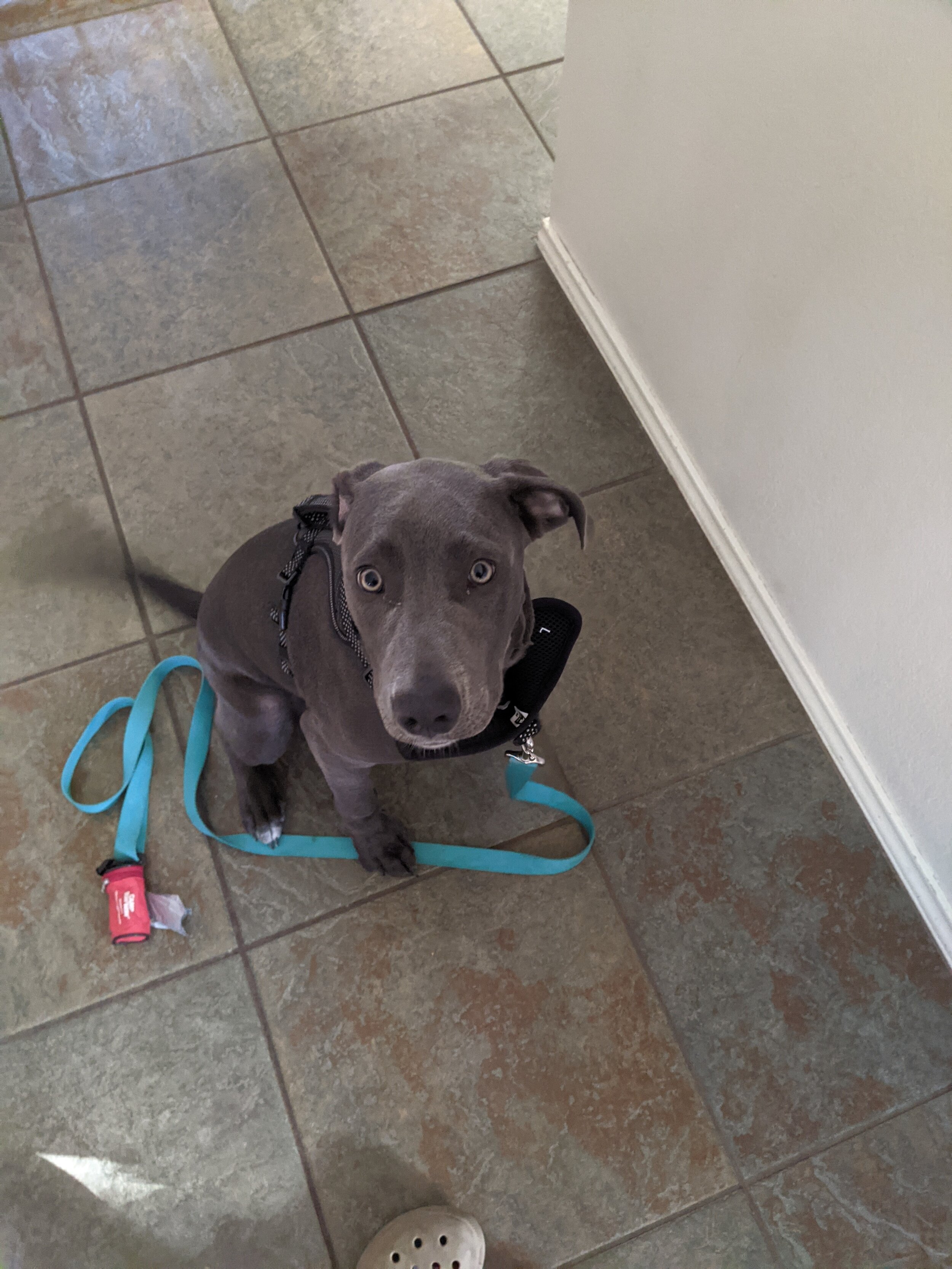Myth: A Wagging Tail Means A Happy Dog
MYTH
If the dog is wagging his tail, that means he’s happy.
Woola is definitely wagging her tail, but does that mean she’s happy?
Commonly thought to indicate happiness (and therefore safety), a wagging tail isn’t actually the universal sign for joy.
TRUTH
A wagging tail usually means increased arousal—it could be pleasure or distress.
Years ago, I was working at a spay and neuter clinic and we had a very unhappy dog in for services. We had to use multiple techniques to safely restrain him and he would have bit someone if he could. His tail was wagging the whole time.
Not all wags are the same. Generally, a wide, loose wag (the kind that gets the dog’s spine and hips moving too) indicates more “friendliness” than a narrow, stiff wag.
We also have to look at what the rest of the dog’s body is doing:
Is his mouth open or closed?
Is he looking at you softly, or staring hard?
How’s his weight positioned over his feet—evenly distributed or leaning one direction?
Is he barking—if so, what kind of bark?
Any tongue flicks or yawning?
How about his ears—pinned, twitching forward and back, or very erect?
This video from Instinct Dog Behavior and Training has some GREAT examples of tail wagging in happy and distressed dogs.

